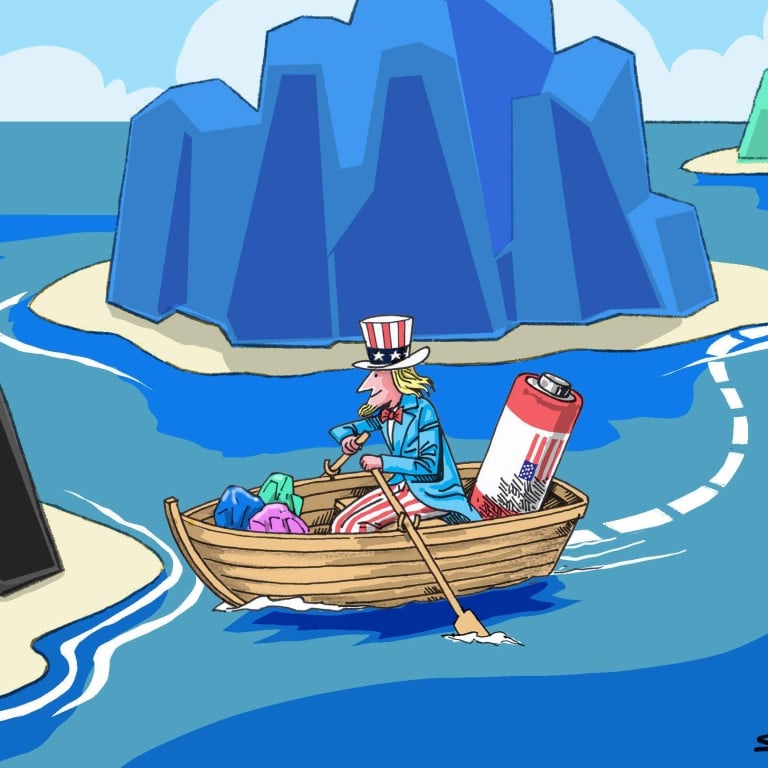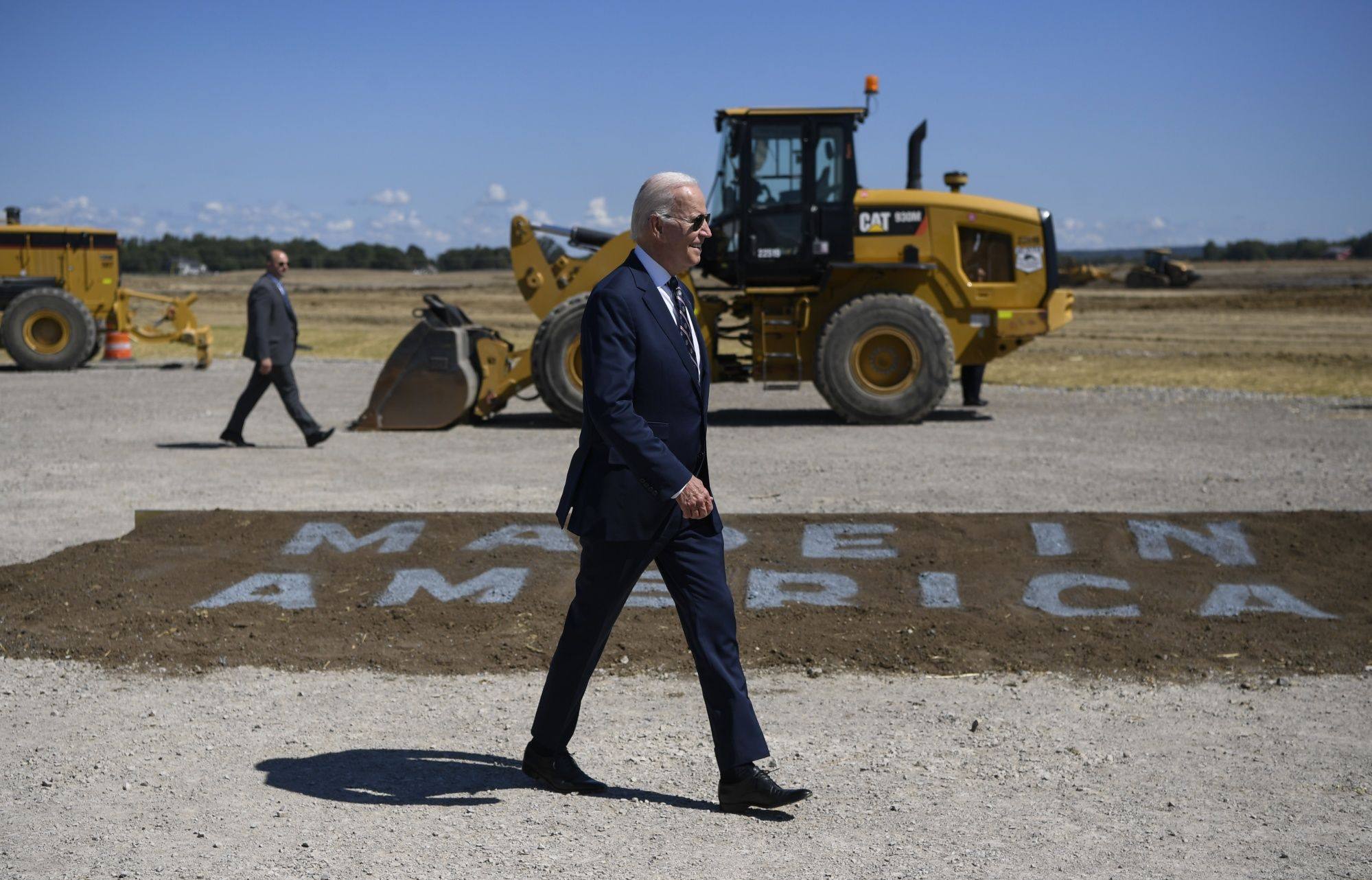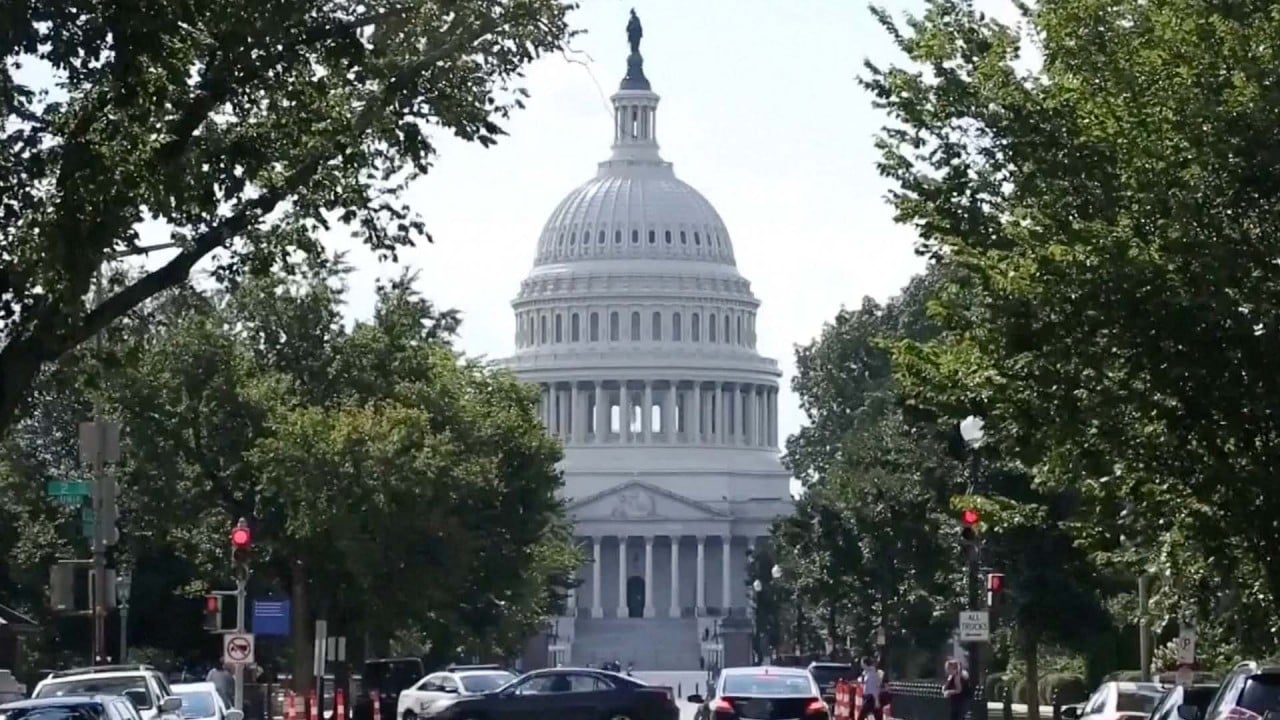
‘Friendshoring’ ensures the US is not alone in moving key supply chains away from China
- The list of technologies the US wants to bring closer to home include semiconductors, solar panels and batteries for electric cars
- This goes hand in hand with securing supply chains of critical minerals, such as lithium
According to data provider Sentieo, mentions of different forms of “shoring” during company earnings calls are higher than at any other time since 2005, indicating that the decision to relocate supply chains is not just a Washington phenomenon.

Over the last two decades, the US has lost its global competitiveness in the semiconductor field. From manufacturing about 40 per cent of the world’s chips in 1990 to less than 12 per cent in 2020, America has fallen behind its competitors.
As for the other sectors included in the supply chain review, the administration is exploring avenues to increase cooperation on a diversified supply chain.
As the Biden administration embarks on an ambitious mission to transform America’s rust belt into the electric vehicle belt, and to almost quadruple the number of solar panels in the US from 240 million to about 1 billion in the next eight years, securing supply chains of critical minerals is critical.

The US State Department in its briefing announced that the partnership “will help catalyse investment from governments and the private sector for strategic opportunities – across the full value chain – that adhere to the highest environmental, social, and governance standards”.
Countries such as Australia and Canada have a significant role to play in the critical mineral sector. Australia has one of the world’s largest reserves of cobalt and lithium, both of which are used to make lithium-ion batteries for electric vehicles. And as nations such as South Korea gain expertise in processing lithium, many of the stages in the battery value chain could be executed by friendly shores.
Why US ‘friend-shoring’ plan to contain China will run into trouble
Similar to semiconductors, critical minerals and batteries, there is a growing interest in securing the supply chains of electronics and ingredients used in pharmaceuticals.
While the significance of the latter became apparent during the Covid-19 pandemic, China’s zero-Covid policy has boosted interest in electronics manufacturing in other markets. Some Japanese and Western corporations have moved part of their manufacturing to places such as Vietnam, Thailand and Malaysia.
As competition between the US and China heats up, friendshoring will gain traction as an alternative to onshoring by both businesses and governments.
Akhil Ramesh is a fellow at the Pacific Forum


